Family : Chaetodontidae

Text © Giuseppe Mazza

English translation by Mario Beltramini
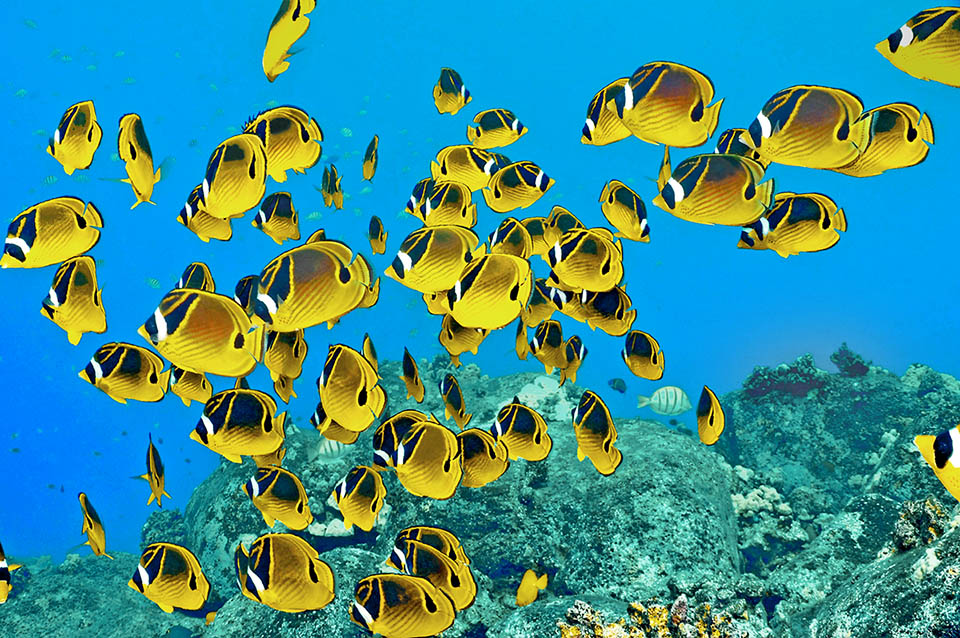
Amazing gathering of Chaetodon lunula in the Hawaiian waters due to the appetizing presence of thousands of eggs of Abudefduf abdominalis entrusted to the currents © Barry Fackler
The Raccoon butterflyfish (Chaetodon lunula Lacepède, 1802) belongs to the class of the Osteichthyes, the bony fishes, to the Actinopterygii, the ray-finned fishes, to the vast order of Perciformes and to the colorful family of Chaetodontidae.
The name of the genus Chaetodon comes from the Greek “χαίτη” (khaite) = hair and “ὀδούς” (odous) = tooth, due to the “bristle-shaped teeth”.
The name of the species lunula comes from the Latin “luna” = moon, night, therefore, “small moon”, with reference to the black crescent it has on the eyes, followed by an analogous white pattern, and maybe also due to the fact that it is a nocturnal butterflyfish.
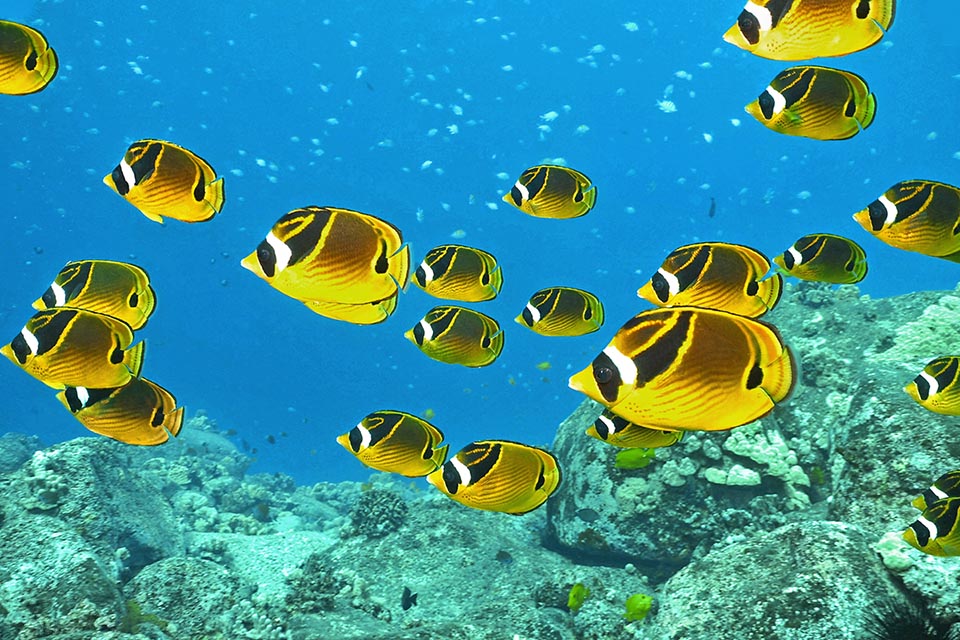
Usually, in fact, it’s a species moving in pairs or in small schools of 5-20 individuals at most. Its range is very vast in the tropical Indo-Pacific © Barry Fackler
This characteristic black band on the eyes explains also the Italian, English and French name, of Raccoon butterflyfish.
Zoogeography
It has a very vast distribution in the Indo-Pacific. We find it from South Africa, Madagascar, East Africa and Somalia up to the Maldives, India, Sri Lanka, Thailand, Australia, Indonesia, New Guinea, Micronesia, New Caledonia, Philippines, Taiwan, and China up to southern Japan.
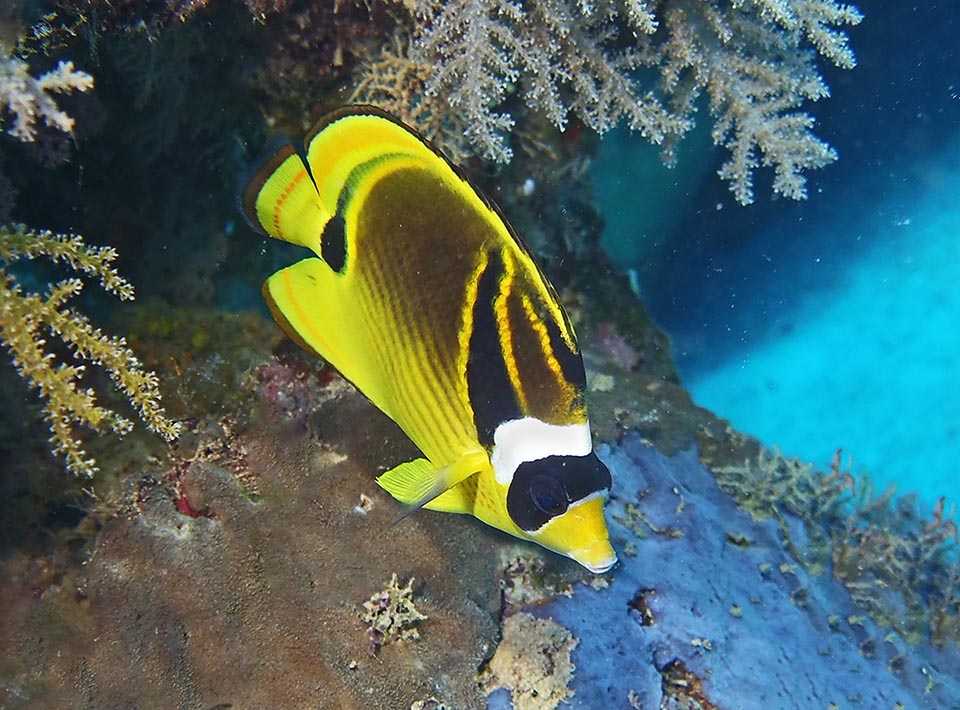
20 cm long at most, it is often called in various languages Raccoon butterflyfish, due to the presence, like the raccoons, of a black mask on the eyes © Karine Marangon
Eastwards, it reaches the Marquesas, Ducie Island, Hawaii and the Galapagos; southwards, Lord Howe and Easter islands.
Ecology-Habitat
It lives in the atolls and on the border of the madreporic formations up to 30 m of depth.
Morpho-physiology
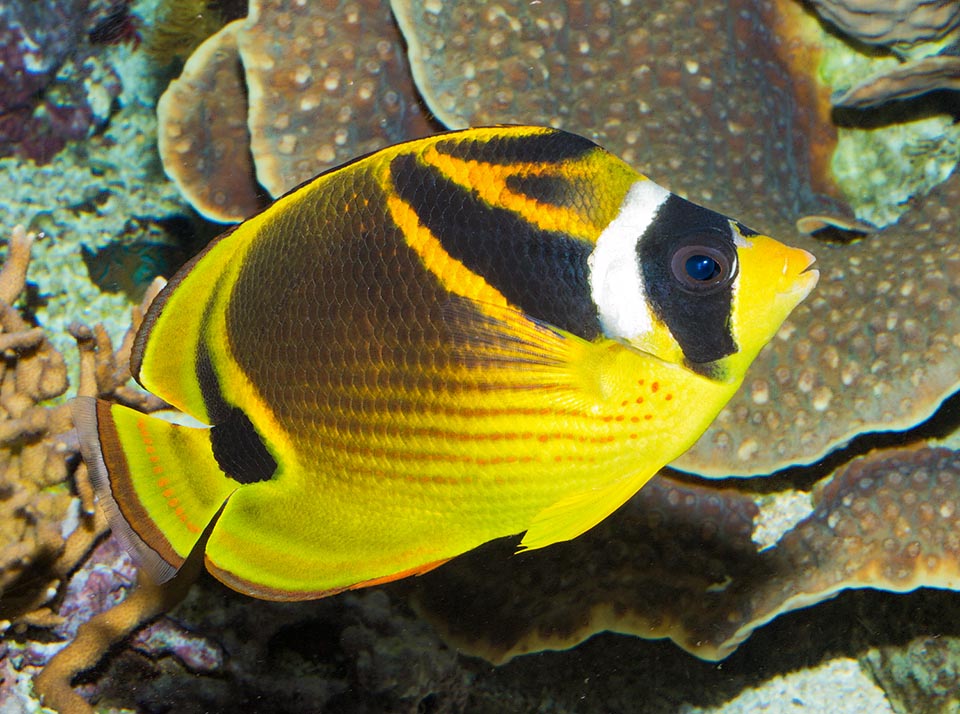
Conversely, the scientific name of lunula, small moon in Latin, comes, seen in profile, from the white band near the mask representing a quarter of moon © Giuseppe Mazza
The Raccoon butterflyfish can reach the 20 cm. The body is flat, more or less oval, with robust snout, slightly pointed.
The dorsal fin has 10-14 spiny rays and 20-25 soft; the anal has 3 spiny rays and 17-20 soft; the ventral ones 1 spiny ray and 5 soft; the pectoral are unarmed, with 14-17 rays, and the caudal is more or less blunt.
Yellow is the background colour. The wide carnivalesque black band hiding the eyes is followed by a white band and then by two black triangles pointing towards the back.
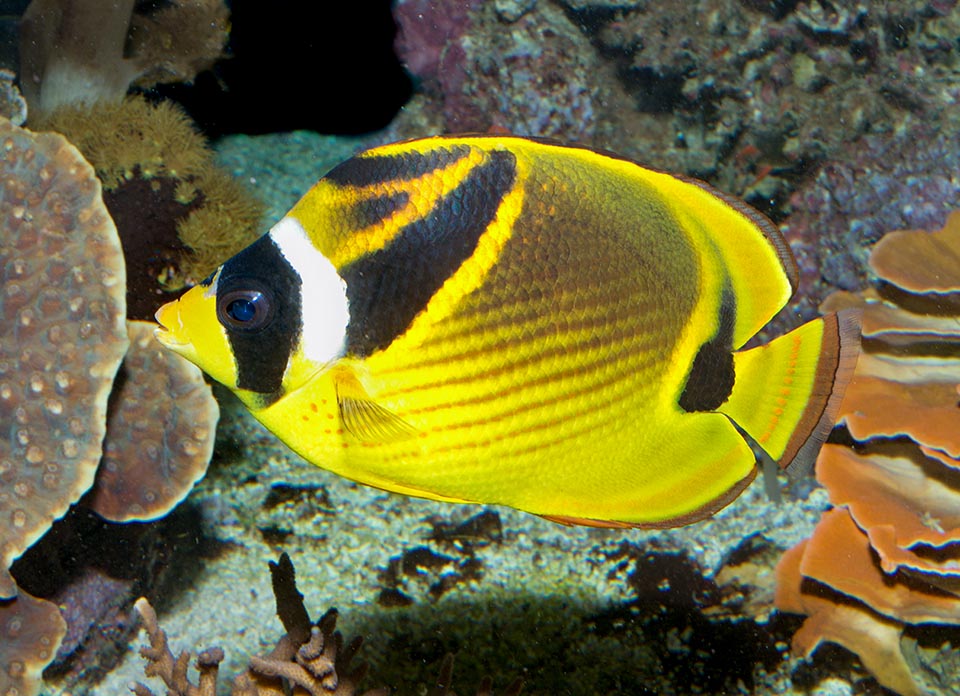
Lives in relatively shallow waters, not under 30 m, mainly eating nudibranchs, tubicolous polychaetes, small crustaceans and other organisms it finds on the bottoms. © Giuseppe Mazza
There is also a showy black spot on the caudal peduncle, which extends like an upside down comma on the back. The higher part of the sides, dark, breaks in direction of the belly into reddish lines ending in small dots.
The caudal fin, after the translucent part, exhibits a dark orange band which is resumed by the edge of the dorsal and anal ones. It is preceded, in the yellow zone by an elegant pattern with orange small dots, like those under the operculum.
Ethology-Reproductive Biology
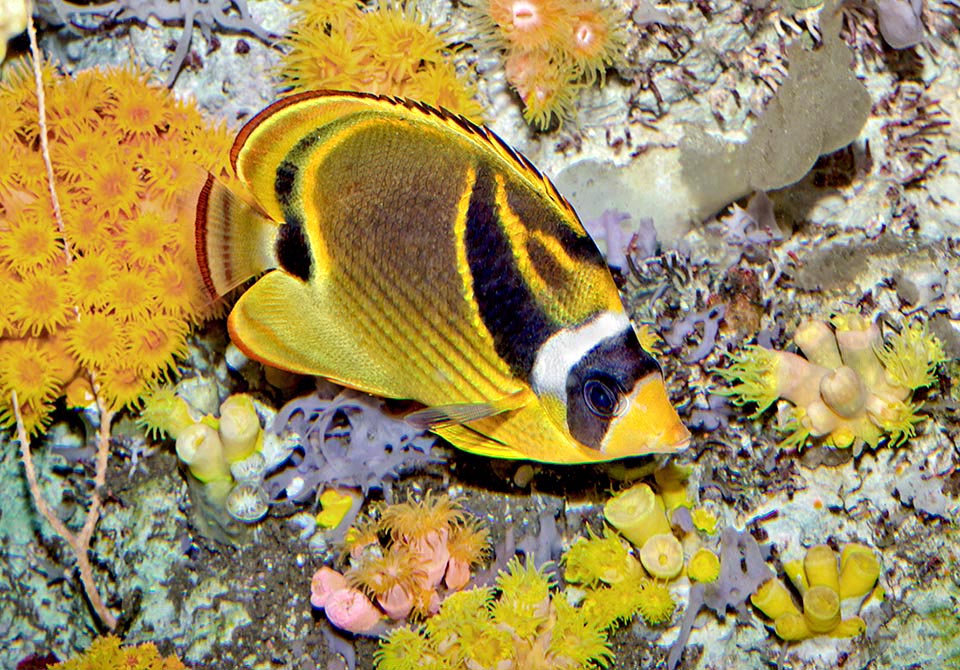
It grazes phanerogams and benthic algae, but unlike many butterflyfishes, it seems that the madrepores polyps enter only marginally its diet © Giuseppe Mazza
The Raccoon butterflyfish lives in pairs or small schools.
It mainly nourishes of nudibranch molluscs and of tubicolous polychaetes, without ignoring the crustaceans, the small benthic organisms and the algae. The polyps of madrepore enter only marginally its alimentary diet.
After the fecundation, the eggs are entrusted to the currents.
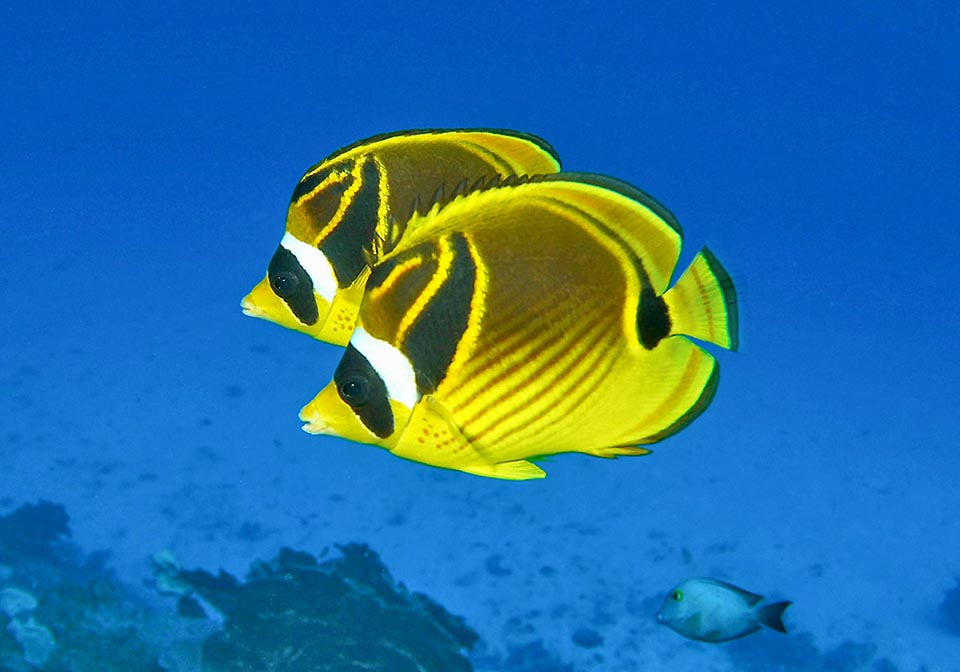
The pairs entrust fecundated eggs to currents and the larval stage lasts about 2 months. Due to the very varied diet and the good resilience it’s not an endangered species © Barry Fackler
The populations are not at risk because they may double in less than 15 months, the diet is varied, and the fishing vulnerability index is very low, marking just 10 on a scale of 100.
Synonyms
Pomacentrus lunula Lacepède, 1802; Chaetodon biocellatus Cuvier, 1831; Tetragonoptrus biocellatus Cuvier, 1831.
→ For general information about fishes please click here.
